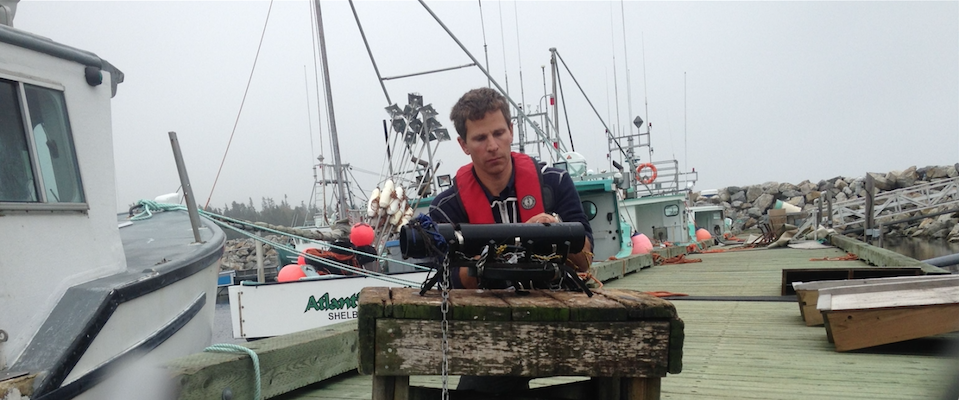The small fishing harbour of Lower Sandy Point, near the southern tip of Nova Scotia, was modified to reduce the agitating effects of swell. Breakwaters were added, nearly enclosing the harbour. The resulting structure – approximately in the shape of two backward Ls with an opening between their bases – successfully reduced the swell, and, several times each year, in the presence of specific atmospheric forcing, put the harbour at near-resonance.
Vincent Leys, Coastal Engineer and Moritz Lehmann, Senior Oceanographer, both with CBCL Limited, investigated the propagation of waves within and without the harbour, collecting wave data with three RBRsolo Ds. They used wave measurements, bathymetry, winds, sediment type, and offshore wave climate, to perform a numerical wave model study of the harbour.
‘we deployed wave gauges to measure the penetration of swell into the harbour, as well as the resonance process.’Vincent Leys
To diagnose the problem, Leys says, “we deployed wave gauges to measure the penetration of swell into the harbour, as well as the resonance process.” The wave gauges he refers to are three rented RBRsolo Ds, of which two were positioned inside and one outside the harbour, in September of 2014. They logged depth for two weeks at 2Hz. “Our objective was to measure at least one event, which we got. It was the remnants of an extra-tropical storm.” Data during that event showed a peak wave period of 12s and amplitude of 5m.
CBCL’s team found, “the natural resonance period of the harbour corresponded exactly to the period of these waves that were naturally occurring outside the harbour.”
Due to their shape, small harbours may be prone to such resonance structures, called seiches, established by atmospheric forcing that creates an initial or a periodic perturbation. Such harbours may be susceptible in particular to periodic forcing at near-resonant frequencies by infragravity waves. The Handbook of Coastal and Ocean Engineering says: “[Infragravity] waves can induce seiches in comparatively small-scale semi-closed basins, such as ports and harbors, which have natural periods of a few minutes and which may pose a serious threat for large amplitude wave responses.” Ships at berth in these conditions, it says, can be caused to yaw and sway.
An additional consequence of a seiche in a harbour, the handbook notes, “is that even relatively small vertical motions (sea level oscillations) can be accompanied by large horizontal water motions (harbor currents).” At the constricted entrance to the harbour, CBCL’s team found such currents. “Because of this long standing wave emptying and filling the basin in intervals of three to four minutes, it caused really high currents through the entrance.” The result was scour to the tow of the breakwaters.
The Lower Sandy Point Harbour is one of 886 small craft fishing harbours maintained by Canada’s Department of Fisheries and Oceans (DFO), which together account for “nearly 90% of all fishing landings in Canada, valued at approximately $1.6B.”
“We presented a number of options to reconfigure the harbour so that the harbour authority and DFO could decide which one suited their needs and their budget.” To mitigate resonance in the harbour, CBCL’s team concluded that the harbour’s dimensions would need to be changed, involving a complete redesign. They also concluded that to further decrease swell, a breakwater extension would need to be added to the harbour entrance.
CBCL is currently working on numerical model studies for two more harbours in southwest Nova Scotia. They deployed RBRsolo Ds over winter and is using the data to inform breakwater planning.
“This methodology of deploying wave gauges prior to doing the modeling is setting the standard now for some of the larger harbour developments that we do,” says Leys. “The planning and modeling of harbours prior to designing infrastructure has to be based on a solid understanding of the local processes, and measuring waves is certainly part of that.”
